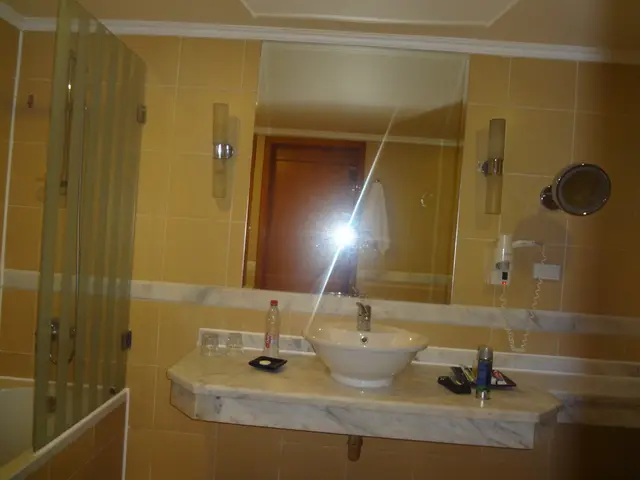Guide on Terrarium Substrate: Exploring Materials and Ideal Mixtures for Your DIY Terrarium
In the world of terrarium gardening, the choice of soil mix plays a crucial role in the success of any project. A well-balanced soil mix should provide the right combination of water retention, drainage, aeration, and support to create a thriving miniature ecosystem.
Charcoal, known for its ability to bind to contaminants, is often touted as a "cleaning" material. Activated charcoal, in particular, is a popular addition to terrarium soil mixes due to its filtration and odor control properties.
Coconut coir or peat moss serves as the base organic material, offering moisture retention and aeration. Compost or earthworm castings, rich in nutrients, provide a vital source of nourishment without compacting the soil. Perlite or coarse sand, added for drainage and aeration, helps improve the soil's structure and texture.
Orchid bark, a chunky mix of bark shavings, provides structure and spaces within the soil medium. It also aids in aeration and water retention. Lava rock, or Scoria, offers excellent aeration and drainage, and can be used to wick water upwards.
Aquarium soil, regular soil that has been baked to produce dry pellets, is gaining popularity due to its minerals and positive growth aspects, with much better drainage than regular potting soil. Tree fern fiber, although difficult to source sustainably and expensive, brings a unique structural dynamic to a mix and has a natural look.
Sand can be added to increase aeration and drainage in a substrate mix. Structure materials, such as orchid bark and lava rock, provide drainage and root aeration, helping to prevent compaction.
Terrarium soil mixes offer the flexibility to adapt to different terrarium needs. For instance, the Atlanta Botanical Gardens Mix is a well-regarded choice, while coco coir, a popular substrate base due to its high water retention, neutral pH, stability, and resistance to decay and pests, contains no nutrients.
Sphagnum moss, with its unparalleled water retention and antimicrobial properties, is a valuable addition to a terrarium substrate. However, it's not an easily renewable product.
A bioactive substrate, optimized to support terrarium microfauna and microflora, typically favors a higher proportion of organic elements and more charcoal or porous material to maximize "bioactivity" and support more life.
The base of a terrarium substrate makes up about half of the overall mix and provides both support and water retention. Terrarium substrate layers can be separated according to function or mixed together, but in most cases, it's recommended to separate them for better watering buffer and planting.
In conclusion, finding the right mix of terrarium soil is essential for the success of any project. By understanding the functions of each ingredient and adjusting the proportions to suit your specific plant and humidity needs, you can create a well-balanced, aerated, and well-draining terrarium soil mix that will nurture and sustain your miniature ecosystem.
- In the realm of fashion-and-beauty and home-and-garden enthusiasts, adding a terrarium with a well-crafted substrate mix to one's lifestyle can be an intriguing addition, offering a miniature garden that thrives with the right balance of water retention, drainage, aeration, and support.
- Bookworms might find a book on terrarium gardening enlightening, providing insights on various terrarium substrate mixes and their effects on the plant life within a terrarium, while entertainment-seekers could enjoy watching tutorials or documentaries on this unique hobby.
- As for food-and-drink pairings, a terrarium garden could potentially grow small edible plants, adding a unique flourish to culinary projects, creating an interesting blend of fashion, home, and food.




